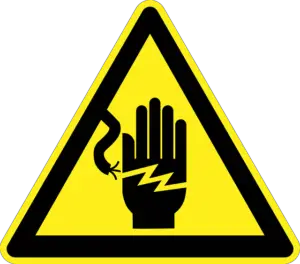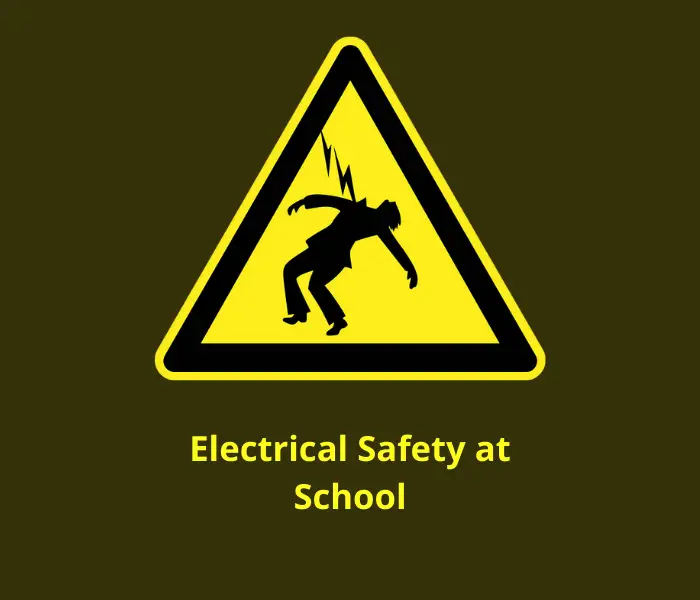How do you ensure electrical safety at school? What devices do you need to test? and How to minimize electrical hazard?
Electrical safety at school is one of the most critical issues that school managers, teachers and parents must pay attention to.
I can remember that day, when I was a young kid, I put a metallic nail in the power receptacle.
I was chocked so hard, Fortunately I’m still a live, and I’m an electrical engineer.
Now, I’m writing this article to help you to keep your children safe from electrical hazard at school.
For youngsters, there are a number of electrical safety measures that can help avoid major harm or death.
For more details read my other articles:
- Kids safety at home, 11 hidden hazards you might not know.
- Electrical safety checklist for home and workplace.
Table of Contents
ToggleHow do You Ensure Electrical Safety at School?
As a school organization, there are a number of ways that may decrease the risk of an electrical mishap. Precautions must be taken in order to protect not only the students but also the school employees.
- It is important to replace any damaged or outdated extension cords in order to avoid any school personnel from coming into direct touch with the cord.
- You should never run cables on the ground or in an open conduit system.
- Whenever you replace an appliance, you should always turn off its power supply first.
- Don’t use extension cables and plug appliances straight into the wall outlets.
- You should check the wattage rating of your appliances to make sure that they don’t overload your power supply unit. Your switch or cable might be damaged by this product.
- Electrical safety seminars are a great way to educate students about electrical safety and make sure they know the basics.
- Alternatively, you might display a sign in the classroom reminding students of all the measures and warnings they should take to stay safe.
- It is important to test the RCD (residual current device) regularly.
- Circuit breakers must be installed on the power supply board.
- Don’t use more than one adapter in a single plug.
- Training of employees is also necessary in case of an emergency.
- There must be a first aid station on campus at all times
Electrical Safety Tips For Students
Electrical safety at school is essential for our kids, as children do not aware that electricity may cause serious injury or even death to them. Teaching children the principles of electricity and electrical shock helps keep them safe.
Following are crucial for youngsters to grasp about electricity.
- As a result, electricity can cause serious injuries or fatalities, including burns, shocks, and death.
- As dangerous as electrical power lines if you don’t take adequate safety precautions, appliances and power cables may be.
- Water is a good conductor of electricity, and your body is made up of 70 percent water.
Regardless of their age, all children must understand the risks of electricity and be able to recognize them. There are few safety guidelines that are more appropriate to older children than to younger ones.
- Never miss with electricity.
- Electrical outlets and light bulb sockets are dangerous places to insert your fingers or any other item.
- If the appliance is off, keep fingers and other items away from it.
- A sink or other source of water should never be used as a location for an appliance.
- Electrical cables and appliance cords should be kept away from heat sources.
- Electrical cables should be kept away from sinks and other sources of water, including wet places.
- Do not touch any electrical equipment or device if you are in contact with water (light switch, for example).
- Unplug the power cable before pulling it out of an electrical socket.
- Unplug an electrical device before you leave for the day or evening.
- If you are wet, never use an electrical equipment.
- Tell authorities or your seniors immediately if you find a frayed or worn cord.
Using Safety Signs for Kids

We must take safety precautions in every location where electrical energy is used, such as schools, homes, offices, power plants, substations and so forth.
There are several methods to enhance safety at school, particularly in the classroom. Similarly for children the school management need to introduce signboards from where they can understand the seriousness of Electrical shock.
You need to introduce those symbols, which are also written in simple understandable language from where students can read the signs and understand them easily.
Electrical Safety Testing for School Devices
After installation, every piece of equipment and appliance should be tested for safety, and some require periodic testing to preserve safety. There are a number of elements that need to be in surveillance, or we may test for them in the classroom setting.
- Equipment such as Smart class board, TV, projector, laptop, switch boards and others must be thoroughly tested because students spend the majority of their time in the classroom.
- Computers, printers, power boards, etc., are examples of library appliances.
- An example of a staff room equipment would be a coffee maker.
- Such as a vacuum cleaner and other cleaning equipment.
- All appliances that require electricity to operate must be tested, and their connections must be examined to ensure there is no defect in the item or the distribution panel.
In line with the country’s electrical standard for safety, all tests must be conducted.

